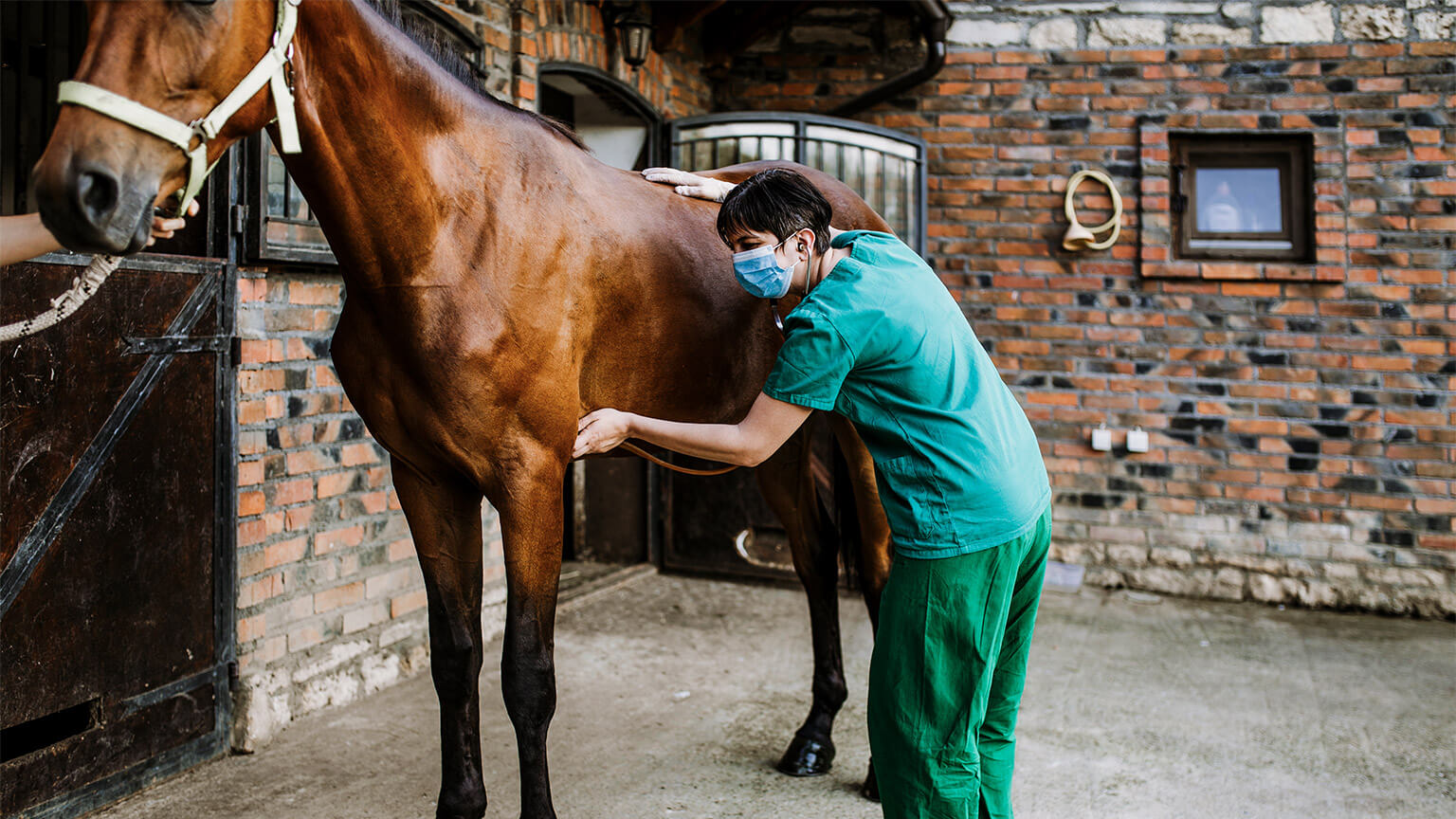Within the veterinary industry, several common hazards can occur in the workplace. You need to know and understand what these hazards are and how to control them so workers are not exposed to the risks from these potential hazards.
The awareness of workplace hazards and risks is an important element to any employee. Quite often the more obvious areas of concern will have already been identified by management and/or industry advisory bodies and these will be documented in your Workplace Health and Safety policy. However, it is the responsibility of individual employees to be familiar with each identified hazard and the likelihood of it occurring (risk factor) and report any instances of unsafe practice, broken machinery/equipment or poor layout of furniture/equipment. This helps to prevent near misses or injuries from occurring.
What is the difference between Hazards and Risks?
A Hazard is something that can cause you harm, for example, electricity, chemicals or an animal.
A Risk is the likelihood of that hazard occurring and also the level of severity of harm that it may cause.
Effective risk management involves four steps which must be documented within policies and procedures and also followed by all personnel.
- Identify Hazards - Find out what could cause harm. These may be hazards caused by animals, chemicals, biological elements, and/or radiation to name a few.
- Assess Risks - Understand the likelihood of a hazard causing harm and how serious it could be.
- Control Risks - Implement the most effective control measure that is reasonably practicable in the circumstances.
- Review Control Measures - Set up a regular schedule of review to ensure the most effective control measure is being used and also that it is working as planned.
Duty of care
Employers and Employees both have legal responsibilities as per Workplace Health and Safety legislation. Acts will often refer to the phrase "duty of care". This is the care owed by one person to another. Concerning hazards and risks in the workplace, a duty of care helps to ensure that hazards are identified, assessed, controlled (hierarchy of control = elimination, substitution, engineering, administration, or personal protective equipment), and the process is reviewed regularly by applicable parties to reduce incidents.
Employer duty of care
An employer must do the following.
- Provide a safe working environment for employees.
- Provide safe systems of work and safety procedures.
- Machinery, plant, and equipment need to be maintained in a safe condition.
- Substances used in the workplace need to be stored and used according to manufacturer instruction.
- Provide information, instruction, supervision, and training to ensure each employee is safe from injury and risks to health.
Employee duty of care
An employee must do the following.
- Take reasonable care for their own health and safety, for example, use personal protective equipment if provided.
- Take reasonable care for the health and safety of others.
- Comply with any reasonable instructions, policies, and procedures provided by the employer, business, or WHS representative.
- Report any unsafe practices or equipment.
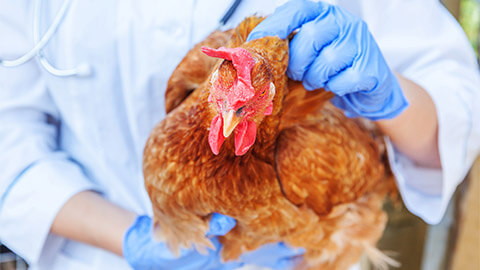
Animal handling presents a very likely risk of injury and must be undertaken with due caution and by following set procedures.
Always ensure you are adequately prepared before handling animals, close doors, remove obstacles and secure other animals. Observe the behaviour and temperament of the animal before approaching to ascertain if it is displaying signs of stress, fear or aggression. Use appropriate restraint techniques and equipment. Before and after handling animals it is best practice to practice effective personal hygiene (handwashing).
Common Injuries/Conditions
Common injuries/conditions (hazards) that can occur as a result of animal handling include:
- Bites - Most animals can bite, some worse than others.
- Scratches - Animals with sharp claws can inflict quite serious scratches to your skin if they are scared or trying to flee.
- Envenomation - Venomous snakes and certain other animals come with this additional risk. Immediate first aid and professional medical assistance are required if envenomation occurs.
- Kicks, crush injuries, head butting / charging, trampling - Common when handling large animals such as livestock or horses.
- Zoonotic diseases - These are diseases that can be transmitted from animals to humans if proper precautions are not taken.
In addition to these injuries, it is important to consider exposure to some bodily fluids as they can also cause illness and potential infection if proper hygiene has not been carried out. Bodily fluids from animals may include:
- blood
- faeces
- vomit
- urine
- saliva
- placenta.
A zoonosis is an infectious disease caused by bacteria, viruses and parasites that spread between animals and humans.
Types of Zoonotic Diseases
Visceral larval migrans (roundworm)
Occurs in dogs, cats and other animals when roundworm larvae migrate to, and mature in, tissue rather than the gastrointestinal tract. Causes damage to tissues, allergic reactions, visual and/or neurological damage. Prevented by deworming pets and maintaining hygiene.
Scabies
Mainly occurs in dogs, pigs and humans. Contracted via direct contact with an infected animal. Causes itchy red dots on the skin from burrowing mites. Prevented by maintaining hygiene and treating infected animals.
Hydatid tapeworm
Occurs in humans through contact with the infected dog and cat faeces. Causes cysts to develop in the lungs, liver, brain - these cysts can be 50cm in diameter. During surgical removal, cysts may burst and form hundreds of new cysts. Prevented by maintaining proper hygiene, wearing gloves, deworming animals for hydatid tapeworm and not feeding raw liver, lungs or other organs of sheep to animals.
Ringworm
Transmitted from cats dogs and horses, is not a worm, but a fungal infection of the top layers of the skin and hair. The kinds of fungi that cause ringworm are called Dermatophytes. While generally harmless, ringworm is highly contagious to humans, especially to children, the elderly and anyone with a compromised immune system.
Toxoplasmosis
Toxoplasmosis is a disease caused by the parasite Toxoplasma Gondii, which can be found in garden soil and raw meat. Cats can get toxoplasma infection by killing and eating infected prey. When pregnant women are exposed the following foetal defects may occur; foetal retardation, anaemia, hydrocephalus (water on the brain) and miscarriage. Males and non-pregnant females may experience flu-like symptoms when infected. It is prevented by cleaning up cat faeces immediately while wearing gloves, as transmission through infected cat faeces is most common (ideally, pregnant women should avoid cleaning up cat faeces altogether), avoid handling raw or uncooked meat, peel and wash home-grown vegetables wear gloves when gardening and cleaning up sandpits, maintain hygiene.
Salmonella
Salmonella is a large family of bacteria. Reptiles and other animals can carry a range of Salmonella in their intestines. When ingested by humans, this bacterium has the potential to cause severe intestinal disease. Good personal hygiene measures, including effective and thorough hand washing along with the use of personal protective equipment such as disposable gloves, will help to reduce the likelihood of infection.
Staphylococcus
Staphylococcus is caused by Staphylococcus bacteria. Generally, Staphylococcus bacteria can live on the skin of mice and other rodents in small numbers without causing any disease in healthy animals. However, when a mouse has a compromised immune system through an injury or an underlying illness the Staphylococcus bacteria can grow in large numbers and cause pain and discomfort to the rodent through skin sores and general ill thrift. Human handlers must ensure quarantine procedures are used to avoid contracting the skin bacteria from infected rodents.
Q Fever
Q Fever is a disease that affects livestock (most commonly: sheep, goats and cattle). In humans, Q Fever presents as flu-like symptoms, malaise, fever, cough and nausea. Severe cases can result in hepatitis. There is a vaccination available and it is recommended that animal carers working with livestock get vaccinated.
Hendra Virus
Hendra Virus is a virus that infects large fruit bats (flying foxes). Occasionally, the virus can spread from flying foxes to horses and horses can then pass the infection on to humans. There is a vaccine available for this virus. Hendra Virus can be deadly to humans.
Bites and scratches not only cause pain and discomfort but there is also the risk of wound infection, contracting a zoonotic disease or in the cases of severe injury, surgical intervention.
Animals are creatures of habit, if you are working in an animal care facility caring for an animal the chances are that you have disrupted their routine, causing anxiety and possibly fear-driven behaviour. Even the most placid animals may become frightened by strange people and different noises.
Injury
In the event of an injury, it is very important to follow these steps to avoid further injury to both the handler and the animal.
- Secure the animal (or get someone with the correct knowledge to assist if you are unable to do this).
- Bathe the affected area with antiseptic (such as iodine).
- Apply basic first aid, such as dressings to control bleeding.
- Notify your supervisor and complete a workplace incident report form.
- Seek medical advice for more serious injuries.
Bites
Australia has many venomous creatures on land and in the sea, however, snakes pose the more common hazard. If your job role is likely to encounter venomous snakes in captivity or the wild you must be aware of the recommended first aid treatment for such an envenomation incident.
- Do NOT wash the bite area - Traces of venom can be used by medical professionals to identify the type of snake.
- Do NOT cut around the area or try to suck out the venom.
- Do NOT use a tourniquet - These can be fatal if applied incorrectly and they are ineffective in this situation.
- Bandage firmly, splint and immobilise - Venom is spread through the lymphatic system which is activated by movement. The spread can be reduced/slowed by applying a firm bandage over a folded pad placed on the actual bitten area. Remember: make sure that blood circulation is not cut off. Bandaging should still be applied even if the bite is to the trunk/torso area. Use a splint to further immobilise the limb/patient.
- Seek professional medical attention as soon as possible, but try not to move the patient. They should not be walking themselves. Movement should be limited. Use a stretcher if need be.
In the animal care industry, you may come across situations that cause psychological distress or even damage. Some of these situations may include:
- overtime and working long hours
- shift work
- dealing with difficult and/or grieving clients
- animal suffering
- euthanasia of sick, and sometimes healthy animals
- heavy workloads
- conflicts with colleagues
- workplace bullying/harassment.
The above factors may contribute to causing work-related stress. Work-related stress is a significant health and safety issue and may have temporary or lasting effects on your mental health and physical well-being. Depression, anxiety, a drop in productivity, headaches, difficulty sleeping, lethargy and an increase in sick days may all be signs of work-related stress. If you are experiencing any of the above symptoms you are urged to seek assistance from your supervisor, human resources manager, doctor or psychologist.
Ergonomic hazards can occur as a result of:
- Incorrect lifting technique - Resulting in back strain. Ensure you utilise the correct lifting technique and seek assistance when attempting to lift heavy items (including heavy animals).
- Incorrect sitting posture - Resulting in neck strain, eye strain, and headaches. Ensure you have your chair, desk and computer set up correctly for your height and desk layout.
- Repetitive actions - Resulting in Carpal Tunnel Syndrome (a disorder in the wrist and hand). Ensure you take regular breaks and wear appropriate protective gear.
Manual Handling
Manual handling is a part of every job however in a veterinary clinic you may do more than others. Manual handling tasks could include:
- lifting animals
- replenishing stocks of tinned and dry food
- stacking boxes.
At times, your work tasks may involve bending, stretching, twisting, or working with heavy loads. All of these increase the risk of manual handling injuries if the tasks are not performed correctly. Several injuries can be sustained if not living correctly, some of these may include:
- sprains to muscles, ligaments, and tendons
- back injuries with the inclusion of damage to nerves, discs and tendons
- joint and bone injuries including shoulder, wrist, knees, ankles, elbows, hands and feet.
Correct lifting techniques
Ensure you keep your back straight at all times, unlike the following diagram on the right-hand side:
There are physical hazards that can present themselves within the animal care industry that you will need to be mindful of which can help you take extra precautions.
The following table illustrates the common physical hazards that may be present in the animal care environment along with a preventative and suggested PPE to minimise the risk.
| Physical Hazard | Cause of hazard | Possible injury illness | Preventative/ PPE |
|---|---|---|---|
| Noise |
|
Sensitivity in ears, possible tinnitus for over noise exposure Headaches Hearing loss over time |
Consider wearing earplugs or earmuffs. Keep doors between kennels/aviaries and other work areas closed |
| Vibration | Certain hand tools such as clippers | May cause carpal tunnel syndrome if used excessively | Use personal protective equipment and take regular breaks to reduce this risk |
| Electrical |
|
Electrocution | Electrical faults need to be reported and repaired by a licensed electrician. Equipment that has been checked needs to be tagged and tested by law |
| Security | Violent or aggressive encounters with people | Physical violence |
|
| Slips, Trips and Falls |
|
|
|
| Heat |
|
|
|
| Ocular (eyes) |
|
Long term eye damage |
|
| Gravity |
|
|
|
Hazardous substances that have the potential to cause harm to the body and may also endanger the environment if not disposed of correctly can be found in the workplace in several physical forms, such as:
- fumes
- smoke
- mist
- gases
- vapours
- liquids.
The following table illustrates the chemical hazard categories along with the damage that can be inflicted with exposure.
| Chemical hazard category | Consequences of exposure |
|---|---|
| Toxic and/or corrosive/irritant chemicals | May cause damage to the environment and also human skin (if in contact) or body (if ingested/inhaled). For example, undiluted disinfectants or euthanasia drugs containing anaesthetic (Lethabarb and Euthal). |
| Carcinogens | May cause cancer if prolonged, unprotected exposure is allowed. For example, tissue specimen fixatives like Formalin. |
| Medications |
Controlled drugs have a high risk of abuse or addiction. For example, analgesics (pain killers) such as Butorphanol, Methadone and Buprenorphine. If PPE is not worn, some medications may absorb into the skin. |
| Flammables / Explosives | Can immediately injure people and animals and also damage property if uncontrollably released and/or ignited. Examples include Liquid Petroleum Gas (LPG) and also gasoline (Petrol) and oxygen. |
Ensure that you are aware of the risks associated with the chemicals you are using in your workplace. Supervisors and Safety Data Sheets should be consulted as necessary, particularly with the arrival of new chemicals. Personal protective equipment MUST be used if recommended by a supervisor, policy/procedure and/or Safety Data Sheet.
Hazardous substances may enter the body in the following ways:
- Ingestion - Eating or drinking the substance.
- Inhalation – Breathing in fumes, vapours, mists and dust.
- Absorption - Chemical contact with mucous membranes, eyes, skin.
- Parenteral - Administration, by injection, either accidental or intentional.
People will be affected by contact with hazardous substances to a greater or lesser degree depending on the toxicity of the substance, amount of substance taken into the body, duration of exposure to the substance and individual biological and physiological differences (for example, age, weight, metabolism, immune function and pregnancy).
Safety Data Sheets
Documents that provide critical information about hazardous chemicals are known as Safety Data Sheets (SDS), they may also be referred to by their previous name of Material Safety Data Sheets (MSDS).
In Australia, manufacturers and importers of hazardous chemicals must prepare an SDS for each product and make this readily available. Workplaces must keep copies of relevant SDS's in a readily accessible location for all employees who may require them. Your workplace will potentially have these in a manual or computer system. Note: SDS's are regularly updated and workplaces must check for any updates on a routine basis and download/print out the correct version for their manual.
These documents include:
- the chemical's identity and ingredients
- health and physical hazards
- safe handling and storage procedures
- emergency procedures
- disposal considerations.
Review this sample of a Sample Safety Data Sheet (pdf).
Source: 2022. [online] Available at: <https://www.osha.gov/sites/default/files/2020-04/Sample%20SDS%20Handout.pdf> [Accessed 26 May 2022].
Safe Storage and Handling
Hazardous substances must be stored securely and labelled clearly. A number of the substances used in veterinary practice must be kept in locked storage and accessed only by veterinary practitioners. They may include medications and dangerous drugs.
Some medications that may be deemed as hazardous include animal medications such as:
- anaesthetics
- chemotherapy drugs.
Your clinic will have policies and procedures related to the storage and handling of dangerous chemicals and drugs and you should ensure you know what these are and the level of responsibility you have for handling them. Some chemicals that you are likely to come into contact with in animal care include:
- sterilising chemicals including disinfectants
- cleaning products, including detergents
- solvents.
Inevitably, hazards do arise in the workplace environment. The use of equipment and machinery is a high consideration. Some examples (but are not limited to) include:
| Machinery | Equipment |
|---|---|
| X-ray machine | Surgical equipment |
| Moving parts from machinery | Needles |
| Anaesthesia machine | Microscopes |
| Suction machines | Catheters |
Controllers of the equipment, machinery or appliances or substances used in the workplace also have legal responsibilities. Controllers of the plant may include specialist contractors handling the installation or decommissioning of equipment in the workplace. The Regulation stipulates the risk management requirements with which the contractor must comply.
Any equipment which may affect the health and safety of the public is also the responsibility of the plant owner as stipulated by legislation.
Essentially, any other personnel required in the work environment has a responsibility to take reasonable care for their health and safety as well as all other personnel in the workplace. To achieve this, they will need to comply with any reasonable instruction given by the employer/PCBU and ensure that their actions or omissions do not adversely affect the health and safety of any personnel in the workplace.
UV Radiation
Otherwise known as sunburn. May cause skin cancer.
Prevention methods for sunburn include covering all exposed areas of the body by wearing:
- long sleeve shirts and full-length pants to cover all exposed areas of the body
- a wide-brimmed hat
- sunscreen with a sun protector factor of SPF30+
- UV protective sunglasses.
Please note: Glass, windows and clouds do not protect you from UV radiation, you can still get burnt on overcast days.
X-Rays
Only appropriately trained and qualified staff with a current radiography licence should operate the machinery (in most cases this is only veterinarians) and they have specific instructions to follow and must wear personal protective equipment.
Repeated exposure of human tissues to invisible x-rays may cause:
- tumour development
- cataracts
- foetal damage
- bone marrow damage
- cutaneous burns
- blindness
- infertility.
Be aware of this hazard, however, as you will not be required to operate this type of equipment it is a very low risk to you. If you are asked to assist the veterinarian, ensure you are following WHS procedures and policies. You need to ensure you are wearing the correct PPE.
Clinical waste is the by-products of medical, nursing, dental, veterinary, pharmaceutical or similar professions and may consist of human or animal tissue, blood, body fluids, excretion, drugs, swabs, dressings, syringes, needles and other sharp instruments.
These products may pose a hazard to people coming into contact with them due to the risk of physical injury (cutting oneself with a sharp implement) or infection (from contaminated sources).
Storage, treatment and disposal
Producers of clinical waste should ensure that such waste is stored, treated and disposed of as per the following conditions.
- Stored in a leak-proof container with a securely fitting lid.
- Stored in a weatherproof, secure location.
- Isolated from other wastes.
- Stored in a manner that poses no threat to health, safety or the environment.
- Clearly labelled as containing clinical or biological waste.
- In the case of accidental spillage, all necessary equipment to clean and disinfect the area should be readily available. This may include a spill kit.
- Disposed of as soon as reasonably possible as per legislative or regulatory guidelines. For example, specifically licensed contractors may be required to pick up clinic waste or local government (councils) may have stipulations regarding the disposal of animal waste and carcasses.
- If any other waste is mixed with clinical waste that waste is also to be treated as clinical waste.
The following symbol warns of a potential biological hazard that may be associated with clinical waste. This symbol/warning sign might be displayed on disposal receptacles like sharps containers or certain bins.
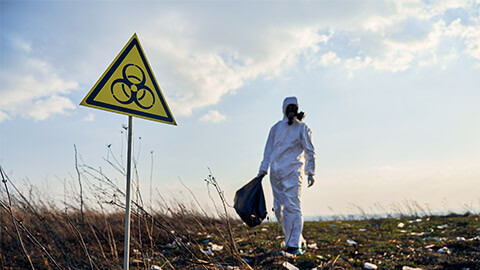
Sharps
Sharps can be defined as objects or devices having sharp points capable of cutting or piercing the skin causing needle stick injuries and infection. This includes, but is not limited to, hypodermic needles, scalpels, syringes, broken glass ampoules and/or bottles and scissors.
Sharps must be disposed of in special containers that are secure and appropriately labelled, they are then collected by or sent to licensed collection agencies for appropriate disposal. Sharps containers are variably sized yellow plastic containers that are:
- puncture-resistant, leak-proof, shatter-proof and able to withstand heavy handling
- clearly labelled as clinical waste and display the biohazard symbol
- able to be sealed when ready for disposal and capable of being handled without danger of the contents spilling.
The following images are examples of sharps containers that are commonly used.
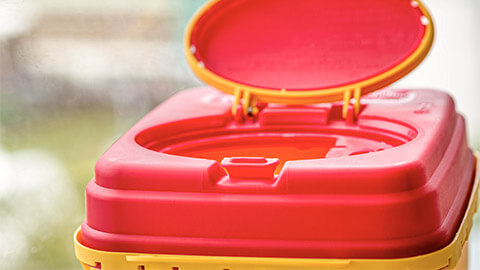

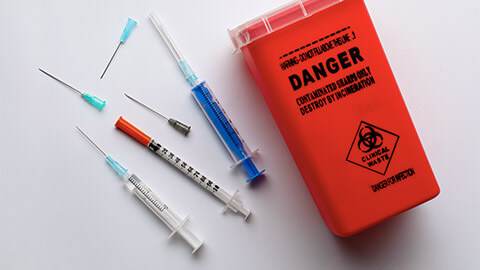
Assessing risk means determining the likelihood of the risk occurring and if it does what the severity level may be. The risk matrix below provides a visual reference of how risk likelihood and severity interact.
A determination of the likelihood of a hazard occurring is made and then a determination of the accompanying risk factor is also made. The two items will intersect within the matrix and depending on the colour code of the intersecting square the hazard is determined to be either High Risk (Red), Medium Risk (Orange), or Low Risk (Yellow). Hazards are ranked using this matrix in their initial instance however the risk factor can be reduced if control measures are utilised.
For example, the hazard of being bitten by a dog may initially be a Remote likelihood with a Major severity factor. However, the risk factor can be lowered to Extremely Remote likelihood if proper training is initiated for animal handlers and the severity factor can be reduced to Minor if personal protective equipment is utilised.
The next step is to follow the Hierarchy of Controls to select the best method of eliminating or reducing risk. One or more of these control measures should be applied to each hazard to reduce the likelihood and/or severity of an injury occurring.
The Hierarchy of Controls:
- Elimination
- Substitution
- Engineering Controls
- Administrative Controls
- PPE
When you arrive at your clinic you must have knowledge of the roles and responsibilities of WHS representatives and WHS committees as well as the managers and staff and how they are applied to the clinic.
WHS Committee and Officers, as well as staff, have a responsibility in their areas of control, and they include:
- communicating to all employees, the requirement to report hazards and incidents to the designated personnel
- reporting all workplace hazards, incidents and near misses before the shift ending or within 24 hours in a register as per the clinic reporting policies and procedures
- participating in the incident investigation process in consultation with the clinic's manager and/or senior duty vet
- initiating an incident investigation using the Incident Investigation Template as required
- complying with the requirements for reporting notifiable incidents to WorkSafe
- reporting serious incidents to WorkSafe or relevant authority
- following safe work procedures and instructions
- updating the WHS Risk Register to reflect changes to hazards, risk ratings and risk controls When all these people/areas work together in relation to WHS then the following can be achieved.
Productive Workplaces:
- Improvements in WHS performance and overall business performance and productivity.
Safe Workplaces:
- A reduction in the incidence, severity, and costs (both direct and indirect) of workplace injury and disease.
Supportive Workplace Culture:
- Improvements in the level of communication and consultation between management and employees, and support for a positive health and safety culture.
Compliant workplaces:
- Ensures that the agency can achieve its legal obligations under the WHS Act
Report incidents and injuries to supervisor
Whenever you are conducting work at your clinic and you sustain an injury or you observe a near miss (see below for definition) then they must be reported to the designated person, this could be the owner of the practice, business manager or if your clinic has aHealth and Safety Officer.
When you identify a hazard, you are required to complete an incident/*near miss reporting form and report it to the appropriate person.
- The employee is to complete all required fields on the form.
- Once the incident/*near miss report is completed, the clinic’s Manager and/ senior duty vet will need to receive a copy of that report.
- This report must then be actioned on as per the clinic's policies and procedures.
* A near miss is defined as any occurrence that might have led to an injury or illness to people, danger to health and/or damage to property or the environment.
Conducting a risk management review must be done in the following circumstances:
- A significant change occurs in the workplace. For example, the initial set-up of the business, the purchase of new equipment, or the hiring of new staff.
- There is evidence that a risk control measure does not adequately control the risk. For example, the number of incidents and/or their severity has not noticeably or statistically decreased since the initial control measures were implemented.
- A notifiable incident occurs. For example, the death of a person, or a serious injury/illness, or a dangerous incident that may have exposed people to risk (near-miss).
Set up an appropriate review timeframe whenever undertaking the risk management process and ensure it is documented in the applicable policy/procedures.
